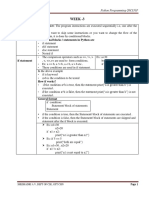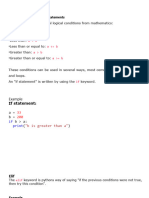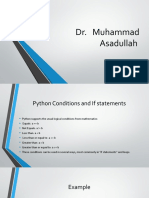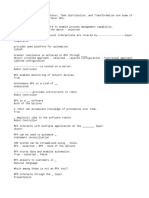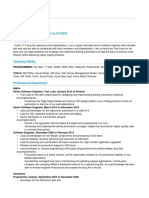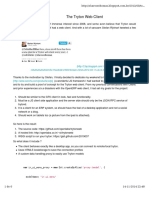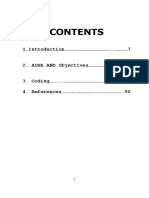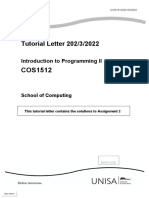0% found this document useful (0 votes)
18 views6 pagesConditional Statements
The document outlines the structure and usage of 'if statements' in Python, including the syntax for if, elif, and else conditions. It explains logical operators such as 'and', 'or', and 'not', as well as the concept of nested if statements and the use of the pass statement for empty if blocks. Examples are provided to illustrate each concept clearly.
Uploaded by
sree priya palleCopyright
© © All Rights Reserved
We take content rights seriously. If you suspect this is your content, claim it here.
Available Formats
Download as PDF, TXT or read online on Scribd
0% found this document useful (0 votes)
18 views6 pagesConditional Statements
The document outlines the structure and usage of 'if statements' in Python, including the syntax for if, elif, and else conditions. It explains logical operators such as 'and', 'or', and 'not', as well as the concept of nested if statements and the use of the pass statement for empty if blocks. Examples are provided to illustrate each concept clearly.
Uploaded by
sree priya palleCopyright
© © All Rights Reserved
We take content rights seriously. If you suspect this is your content, claim it here.
Available Formats
Download as PDF, TXT or read online on Scribd
/ 6






































